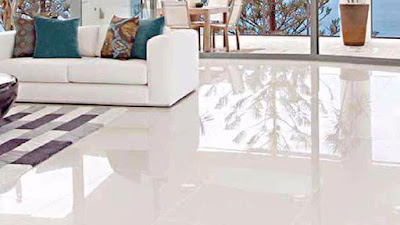All you need to know about the tiles
If you are just searching for more general information about wall and floor tiles, you can find below:
Why to use tiles?
- Ceramic tiles are a powerful home decoration product that is down-to-earth. They are easy to clean, and help give your bathroom walls a water-proof shield.
- If you wisely select your tile, there's no reason why your tiled area shouldn't last generations. Tiles are hardwearing, easy to clean and are not susceptible to UV light fading.
- Preferably carpet tiles have long been recommended to help fight allergies to dust and asthma.
- Ceramic tiles should become part and parcel of your house. New styles and designs will keep your home up-to-date with current trends, and careful selection will boost and protect your home and add value to its property.
Different tiles
Wall tiles / Floor tiles
Tiles made specifically for walls are not meant to be load bearing. They are also lighter than floor tiles, and thinner. The glazes used in making a wall tile are often special, and are not designed to withstand the abrasive forces of foot traffic. Wall tiles only have to be used on walls.
Floor tiles are suitable for both floors and walls. It’s increasingly more popular to use them on bathroom walls, especially the rectangular ones. They're up to 20 percent heavier than wall tiles, so it's critical that your tiler has checked the walls are strong enough to bear their weight.
Non- slip tiles
"Non-Slip" is something of a misnomer to describe a tile. Simply put, no tile is guaranteed to be slip-resistant. A polished porcelain or gloss finish tile is clearly smoother than a normal porcelain finish or a matt glazed tile. As any floor tile can be used on any indoor floor and without a building rule, it is the consumer's duty to select a suitable product in terms of performance and design based on the realistic information available.
The main point to remember is that ALL floor surfaces are slippery when wet, including tiles. Tileprint is not in a position to offer a slip-resistant or slip-proof guarantee, either expressed or implied. All we can do is provide advice, and the details you need.
Natural stone tiles
In the most part, these tiles vary little from their ceramic and porcelain counterparts in terms of installation. Nonetheless:
- Large thick slabs of stone are heavy, so if you intend to build them in a bathroom please make sure you have solid, sturdy walls. The suitability of stone for a bathroom wall will be determined by your tiler.
- Most large stone tiles would need to be cut using electrical power tools. This can be messy and should be done outdoors, taking the required safety precautions.
- The stone is all porous (even polished). It is imperative it is sealed until the construction work is complete. Only after fitting any of our stone goods, please use our water based Stone and Grout Protector immediately. It would contribute enormously to improvements in stain and water absorption.
Tile size should we use
The size of the tile you choose can affect your project's appearance as much as its design and finish. It typically comes down to personal preference and the trend is toward larger tiles these days. There are a few points to bear in mind though:
- Larger tiles can leave a space with less grout lines, giving a more seamless look to a space. Using big tiles is popular now in some of the smaller rooms in the building. It's widely accepted that a big tile can make a small area look larger.
- Remember that the installation of larger tiles appears to require more adhesive. That is because the subtle ondulations in your walls and floors can not be treated in the same way that small tiles can. Therefore, all the tiles need to be slightly elevated to reach the highest level, requiring additional adhesive below,
View and but a beautiful section of tiles in Bangalore now at Tileprint sjowroom



Comments
Post a Comment